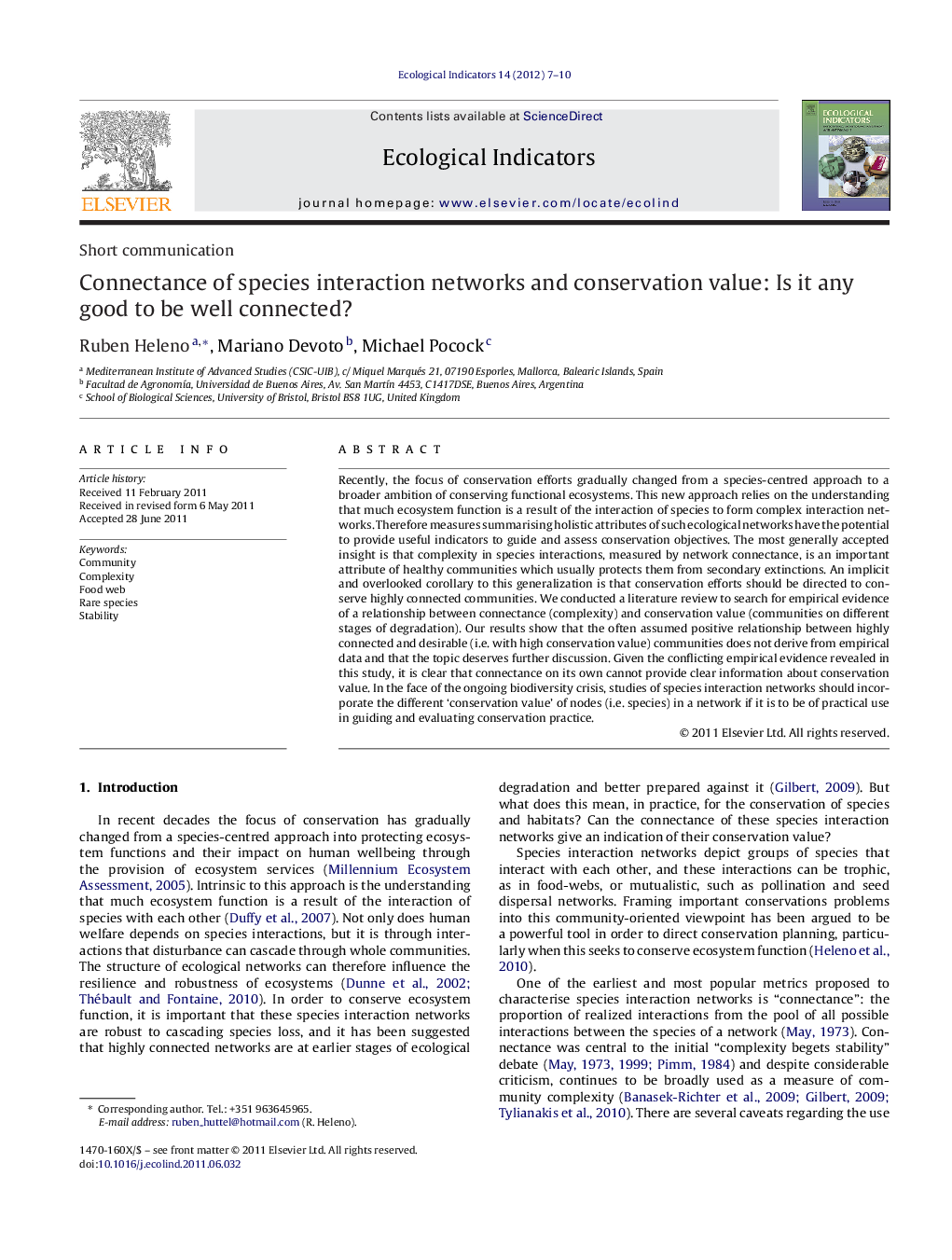| Article ID | Journal | Published Year | Pages | File Type |
|---|---|---|---|---|
| 4373876 | Ecological Indicators | 2012 | 4 Pages |
Recently, the focus of conservation efforts gradually changed from a species-centred approach to a broader ambition of conserving functional ecosystems. This new approach relies on the understanding that much ecosystem function is a result of the interaction of species to form complex interaction networks. Therefore measures summarising holistic attributes of such ecological networks have the potential to provide useful indicators to guide and assess conservation objectives. The most generally accepted insight is that complexity in species interactions, measured by network connectance, is an important attribute of healthy communities which usually protects them from secondary extinctions. An implicit and overlooked corollary to this generalization is that conservation efforts should be directed to conserve highly connected communities. We conducted a literature review to search for empirical evidence of a relationship between connectance (complexity) and conservation value (communities on different stages of degradation). Our results show that the often assumed positive relationship between highly connected and desirable (i.e. with high conservation value) communities does not derive from empirical data and that the topic deserves further discussion. Given the conflicting empirical evidence revealed in this study, it is clear that connectance on its own cannot provide clear information about conservation value. In the face of the ongoing biodiversity crisis, studies of species interaction networks should incorporate the different ‘conservation value’ of nodes (i.e. species) in a network if it is to be of practical use in guiding and evaluating conservation practice.
► Connectance of ecological networks has been suggested as an indicator of their conservation value. ► The relationship between connectance and conservation value is highly context-specific. ► Connectance alone should not be naively used as an indicator of a community's conservation status.
